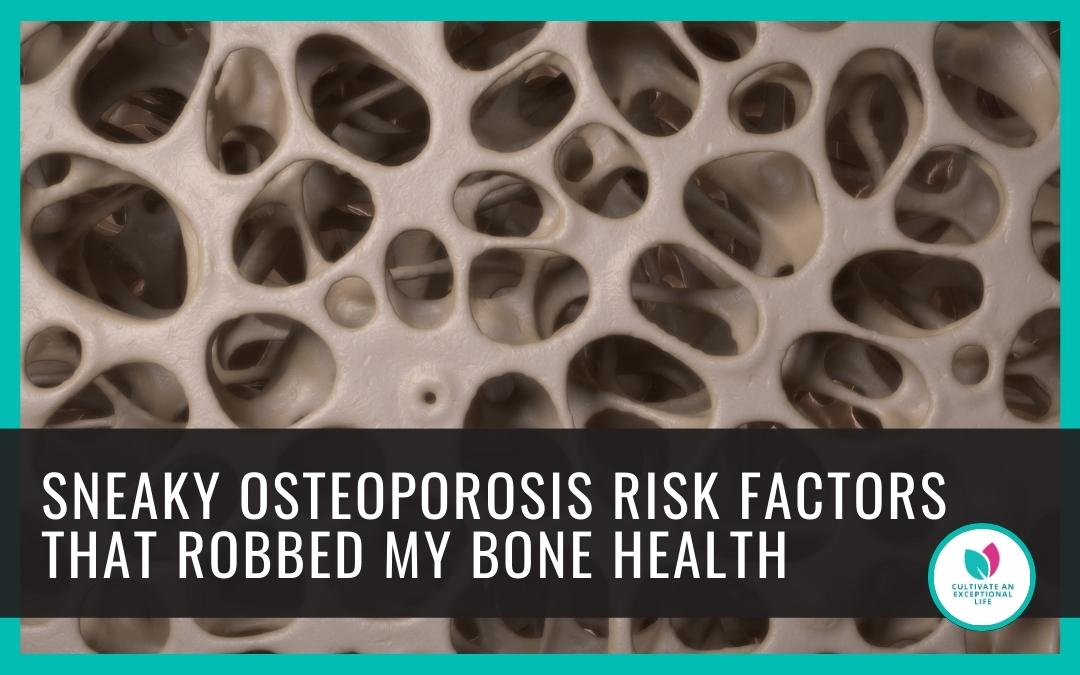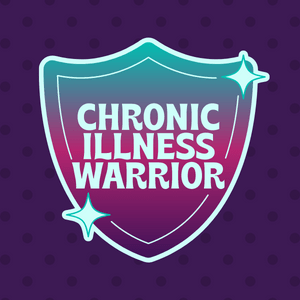Osteoporosis risk factors are important to consider as we age, as this condition often goes unnoticed until it’s too late. That is what happened to me. Thankfully, I asked for a bone density scan. I did so because I knew some of the medications I had been on for multiple sclerosis could contribute to bone loss. Additionally, my daughter had been diagnosed with it in her 20s, so we suspect a genetic component.
Osteoporosis is often referred to as the “silent thief,” osteoporosis is a bone disease that weakens bones and makes them more susceptible to fractures. In this article, we will delve into what osteoporosis is, its causes, risk factors, symptoms, and prevention measures to help you understand and take control of your bone health.
What is Osteoporosis?
Osteoporosis is a condition characterized by reduced bone density and increased bone fragility. It occurs when the body loses too much bone mass or doesn’t make enough new bone, resulting in weak and brittle bones. Over time, this can lead to fractures, particularly in the spine, hips, wrists, and other weight-bearing joints.
Causes of Osteoporosis Several factors contribute to the development of osteoporosis. One of the primary causes is age. As we age, bone loss becomes more common, and our bones become weaker. Additionally, hormonal changes play a role, such as the decrease in estrogen levels during menopause in women, which accelerates bone loss. Other causes of osteoporosis include certain medical conditions. These conditions include rheumatoid arthritis, chronic kidney disease, and hormonal disorders. In addition, the prolonged use of certain medications such as corticosteroids and anticonvulsants can also contribute to osteoporosis.
Risk Factors for Osteoporosis
Several risk factors increase the likelihood of developing osteoporosis. These include:
Gender
Women are more prone to developing osteoporosis than men, especially after menopause, due to hormonal changes that occur during this time. Estrogen, a hormone that plays a crucial role in maintaining bone density, decreases significantly after menopause, leading to accelerated bone loss.
Check. I am a woman. And due to an early hysterectomy I may have lost bones at a more rapid pace.
Age
The risk of developing osteoporosis increases significantly with age, as bone density naturally decreases over time. Our bones are constantly undergoing a process of remodeling, where old bone tissue is broken down and replaced with new bone tissue. However, as we age, this balance between bone formation and bone resorption may shift, leading to a gradual loss of bone density.
Bone density tests are typically recommended for all women age 65 years and older. Men age 70 years and older are also recommended to undergo bone density tests. This recommendation applies regardless of risk factors.
Family history
If you have a family history of osteoporosis, you may be at a higher risk of developing this condition. Osteoporosis has a strong genetic component, and a family history of the condition can increase your risk of developing it yourself.
Lifestyle factors
A poor diet, lack of physical activity, smoking, and excessive alcohol consumption are lifestyle factors. These factors can significantly increase the risk of developing osteoporosis.
I don’t smoke or drink alcohol. I eat fairly healthy, but due to other medical conditions I don’t absorb nutrients well and often don’t keep food down. So nutrition has always been difficult to maintain.
But colas that have phosphoric acid and I have consumed a lot of Dr. Pepper over the years
Consuming an excessive amount of phosphoric acid can alter the balance between calcium and phosphorus ratios, leading to an imbalance not only in the calcium and phosphorus levels but also in the body’s acid-base equilibrium. This imbalance can contribute to reduced bone density, increasing the risk of osteoporosis and fractures. [1, 2, 3]
Body weight
Body weight and body frame size can be significant risk factors for developing osteoporosis. People who have a lower body weight or a smaller body frame may be at a higher risk of developing osteoporosis.
I only weight 50 pounds in junior high. I weighed less than 100 when my first child was born. So that has typically been something I have had in my life. It wasn’t until I reached at 40 that I put on weight, and then when I did, it was too much. I miss my old metabolism.
Hormonal imbalance
Hormonal disorders such as thyroid problems or low testosterone levels can increase the risk of osteoporosis.
I had thyroid issues when younger, but that stabilized when I had children. However, I had a hysterectomy when I was fairly young and that time one of my ovaries had pretty much dies off. So right now I am not sure how much of an impact it had on my bone density.
Other Diseases and Their Treatments
While multiple sclerosis and osteoporosis may not directly cause each other, there are some factors that may increase the risk of developing osteoporosis in individuals with MS. I have also had multiple rounds of high dose steroids for MS, which also puts me at risk.
Individuals with EDS may be at increased risk of developing osteoporosis due to several factors as well.
Basically – I had a lot going against me.
Conclusion
In summary, osteoporosis poses a significant threat with potentially severe consequences when untreated. Termed the “silent thief,” it often advances unnoticed until a fracture occurs.
Recognizing the various risk factors for osteoporosis—such as age, gender, family history, medication, lifestyle choices, body weight, and hormonal imbalances—is essential for identifying those at higher risk of developing this condition.
For those with acknowledged risk factors, seeking medical advice and undergoing bone density tests are instrumental in early detection, providing a pathway for timely interventions to prevent or manage osteoporosis.
Take steps to maintain a healthy lifestyle, including a well-balanced diet, regular exercise, avoiding smoking and excessive alcohol consumption, and managing hormonal imbalances, can also contribute to better bone health.
Remember, it’s never too early or too late to prioritize bone health and take steps to prevent osteoporosis.
ADDITIONAL RESOURCES
National Osteoporosis Foundation














